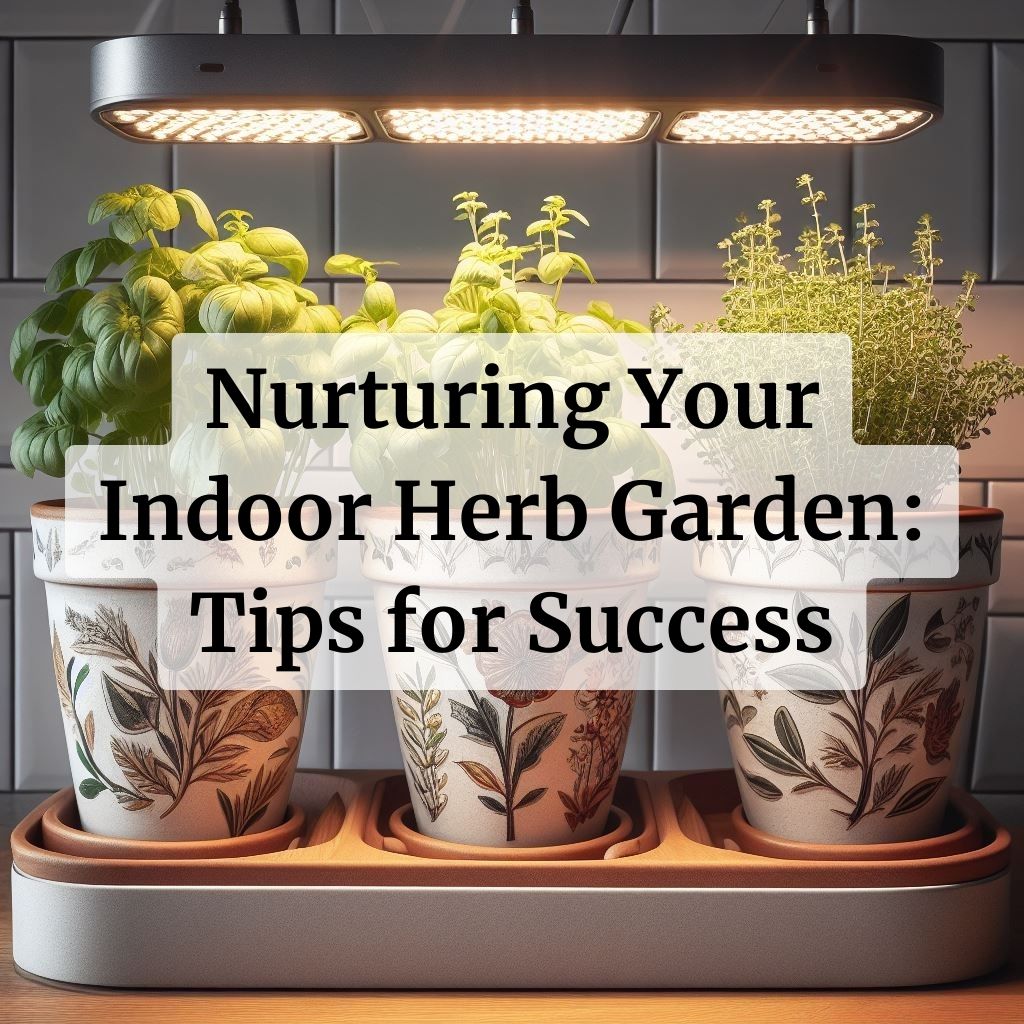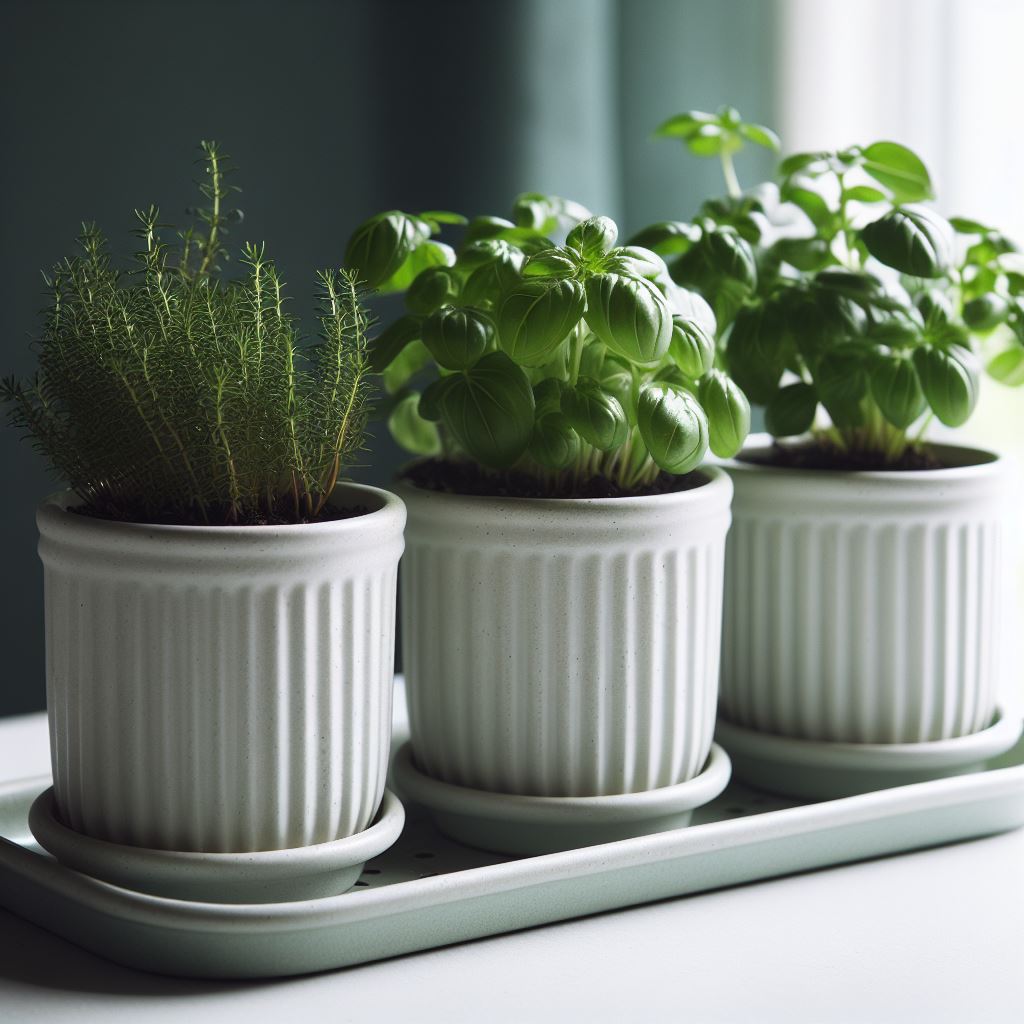
In Part 1 we discussed the fascinating world of LED lights and in Part 2 the importance of choosing the right LEDs for your indoor herb garden kits. Now, in the final article in this series, it’s time to shift our focus to the day-to-day care and maintenance that will keep your indoor herb garden flourishing.
In this article
Watering Your Herbs

Watering your herbs may seem straightforward, but it’s a step where many well-intentioned gardeners stumble. The key is to strike the right balance. Herbs generally prefer slightly moist soil, but they despise sitting in waterlogged conditions.
To avoid overwatering, follow the Goldilocks rule: not too much, not too little, but just right.
The Drip Tray Solution

To maintain optimal moisture levels, consider placing your herb pots on a drip tray. This catchment system prevents excess water from pooling at the bottom of the pot, ensuring your herbs’ roots stay healthy.
Finger Test

An effective way to gauge your herbs’ water needs is the finger test. Insert your index finger into the soil up to the first knuckle. If it feels dry at that depth, it’s time to water. If it’s still slightly moist, hold off for a day or two.
Pinch and Snip
Pruning is the secret to a bushy, vibrant herb garden. Regularly pinch or snip off the tips of your herb stems, especially basil, mint, and parsley. This encourages branching and prevents legginess. Don’t be afraid to use those freshly harvested herbs in your culinary creations.
Remove Yellowing Leaves
Yellowing leaves are a sign of stress or aging in herbs. Promptly remove these leaves to redirect the plant’s energy towards healthy foliage and new growth.
Fertilize with Care
Herbs, in general, don’t require heavy fertilization. In fact, too much fertilizer can result in excessive foliage growth at the expense of flavor. Use a balanced, water-soluble fertilizer at half the recommended strength every four to six weeks during the growing season.
Consider using organic fertilizers to enrich your soil naturally. They provide essential nutrients without the risk of chemical buildup.
Pest Management
Keep a watchful eye for any signs of pests, such as aphids, mealybugs, or spider mites. Early detection is crucial to prevent an infestation.
Opt for natural pest control methods. A gentle spray of soapy water or neem oil can often deter unwanted critters without harming your herbs or the environment.
Providing Adequate Space
As your herbs flourish, they may outgrow their original pots. When this happens, it’s time to consider repotting. Choose pots that allow your herbs room to grow without becoming overcrowded. Overcrowding can lead to competition for resources and hinder the overall health of your garden.
Harvesting for Flavor
The joy of an indoor herb garden is the convenience of fresh herbs at your fingertips. Harvest your herbs regularly to encourage new growth and enjoy their flavors in your culinary creations. Remember to cut just above a leaf node or pair of leaves to promote bushier growth.
Frequently Asked Questions
How often should I water my indoor herb garden?
Water your herbs when the top inch of soil feels dry to the touch. The frequency may vary depending on your indoor environment and the herbs you’re growing.
Can I use regular potting soil for my indoor herb garden?
Yes, regular potting soil is suitable for most herbs. However, you can enhance it with organic matter like compost for added nutrients.
When is the best time to harvest herbs for culinary use?
Harvest herbs in the morning when their essential oils are most concentrated. Use sharp scissors or shears to cut just above a leaf node to promote bushier growth.
By following these tips and nurturing your herbs with love and attention, you’ll savor the rewards of homegrown flavors year-round.







